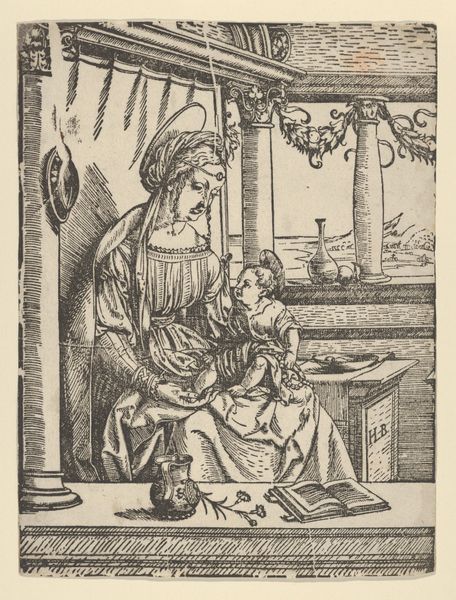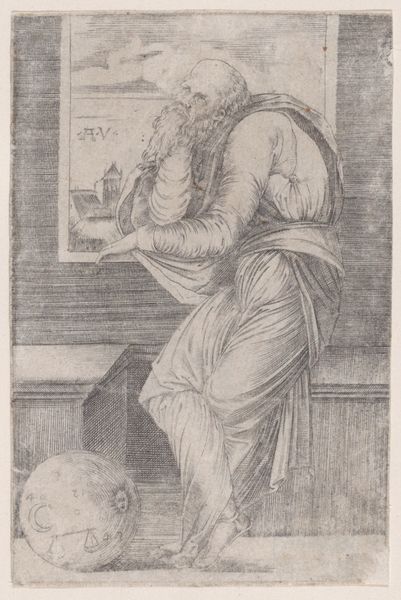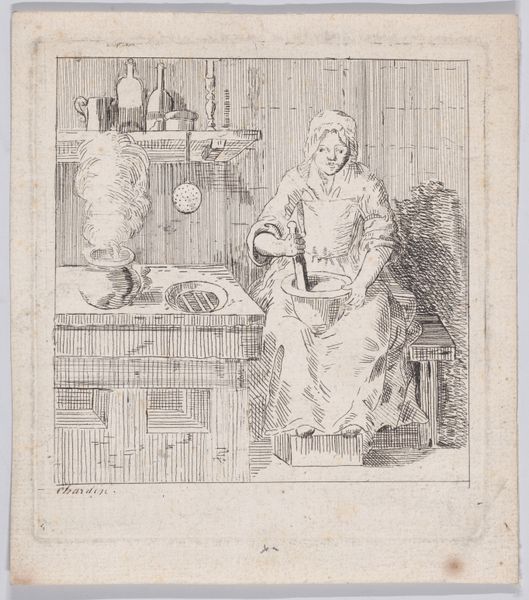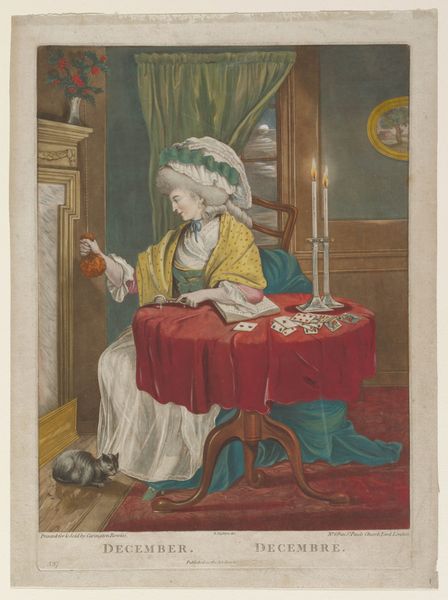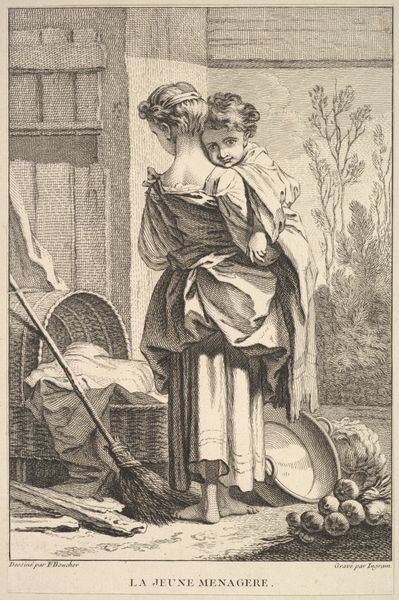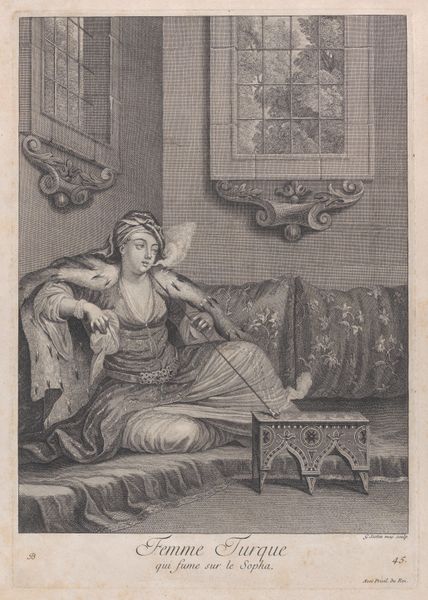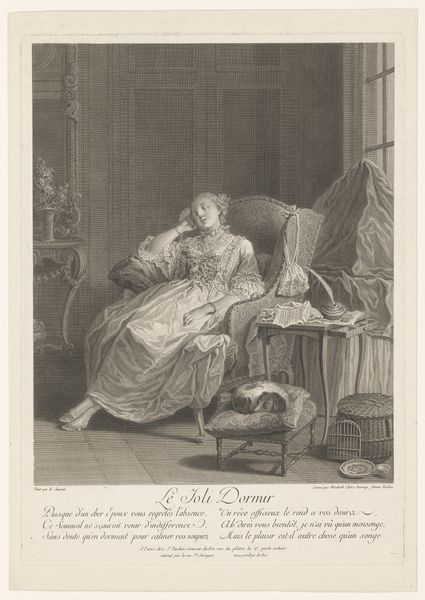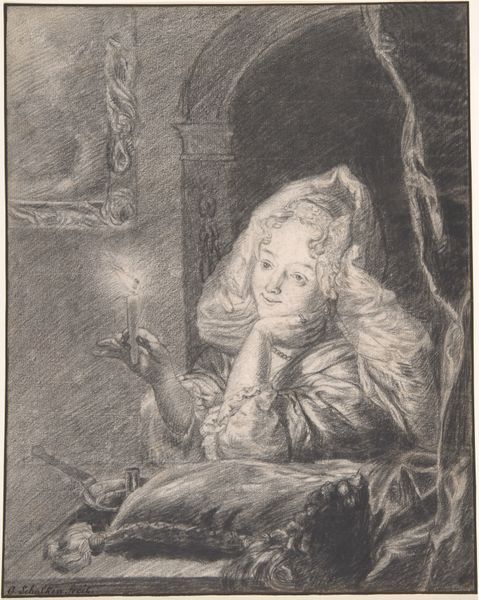
drawing, print, engraving
#
drawing
#
allegory
# print
#
mannerism
#
figuration
#
vanitas
#
history-painting
#
engraving
Dimensions: sheet: 3 1/16 x 3 3/16 in. (7.8 x 8.1 cm) trimmed just outside plate
Copyright: Public Domain
Enea Vico’s engraving, "Vanity," created in the mid-16th century, presents a seated woman gazing into a mirror. Vico was an Italian printmaker whose career coincided with the Protestant Reformation, a time of religious and social upheaval. The image of the woman and her accoutrements speaks to shifting ideals of beauty, wealth, and self-perception. Her elaborate dress and the array of luxury items signify worldly vanity, a theme that often served as a moral lesson during the Renaissance. The inscription at the bottom, "I am lighter than the winds and emptier than shadows," underscores the transience of earthly pleasures. In an era defined by patriarchal structures, images of women were often used to represent abstract concepts. Vico’s "Vanity" invites us to reflect on the complex ways in which women were both idealized and cautioned against the pitfalls of self-regard. This engraving serves as a potent reminder of the ever-present tension between inner worth and outer appearance, a struggle that remains relevant today.
Comments
No comments
Be the first to comment and join the conversation on the ultimate creative platform.


